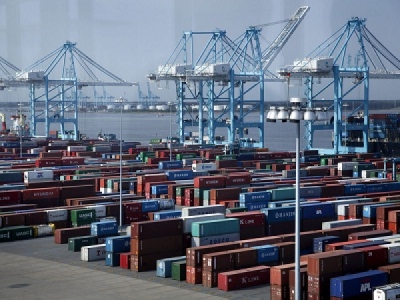
Posted on March 27, 2017
By Robert McCabe, The Virginian-Pilot
The Port of Virginia is still in hot pursuit of having the deepest shipping channels on the East Coast.
In recent months, however, it’s become clear that it’s going to take at least a little longer to get there.
An initial study phase of a big harbor dredging project that could get the port’s channels from 50 feet down to 55 feet or more could take up to a year longer and cost up to nearly $1 million more than the three years and $3 million first projected, according to the U.S. Army Corps of Engineers, which oversees such projects.
The delay comes at a time when a roughly $670 million makeover of the port’s two big container terminals is beginning to unfold – one already in the early stages at Virginia International Gateway in Portsmouth, the other to start this summer at Norfolk International Terminals.
The Port of Virginia, like other big U.S. ports, is expecting bigger ships as early as next month, when newly formed alliances will all be in effect.
John Reinhart, CEO and executive director of the Virginia Port Authority, has said his organization is “doing everything we can to build the landside portion of this.” He has pleaded for help in speeding up the port’s “wider, deeper, safer” dredging projects.
What happened to slow down the process on the so-called “55-foot project”?
The port and the Corps of Engineers, which work as “partners” on such big initiatives, weren’t seeing eye-to-eye on where that process was heading, and the authority asked for a timeout.
“They said, ‘We’re not comfortable with assumptions that you’re making on the future of the project and so let’s stop and talk about it,’ ” said Susan Conner, chief of planning and policy for the Army Corps’ Norfolk District. “And so we agreed to do that.”
Among the issues that wound up on the table: what the future fleet of vessels calling on the port might look like.
The Virginia Port Authority foresees bigger, more heavily loaded ships coming to the port more often, Conner said. The Corps of Engineers takes a more conservative approach.
“We have to be a bit more conservative in how we incorporate risk into our future forecast than, say, VPA would like us to be,” Conner said. “As a protector of the federal taxpayer, we approach the risk a little bit differently and made somewhat more conservative assumptions.”
While the 55-foot project is facing a minor delay, a major milestone in the process is still set for August, when a rough draft of the Corps’ recommendation to Congress is due.
“As frustrating as all this is, I still see a positive side,” said Bill Cofer, an authority commissioner and president of the Virginia Pilot Association, whose members guide big ships in and out of the port.
The bigger ships that the authority has said are on the way will be showing up soon, bolstering the authority’s position, he noted, adding: “Only time will tell.”
Even if the Corps’ final recommendation to Congress included channel dimensions shy of what the authority wants, the Corps could authorize what’s known as a “locally preferred plan,” enabling the port to pay for whatever exceeded the federally authorized specifications.
The port has had congressional authorization to dredge to 55 feet since 1986.
The Corps is reviewing the project again, however, to determine optimum depths and widths based on current and projected traffic.
In June, it’ll be two years since Army Corps of Engineers and Port of Virginia officials signed a pair of agreements that set in motion two long-sought-after dredging projects: the 55-foot project and the so-called “Southern Branch” project, which could get portions of the Elizabeth River down to 40 and 45 feet.
The Southern Branch initiative is on track.
Assuming that Hampton Roads’ 55-foot project needs no further act of Congress to move ahead, completion of the dredging would still be years away – even in a best-case scenario.
Source: The Virginian-Pilot





